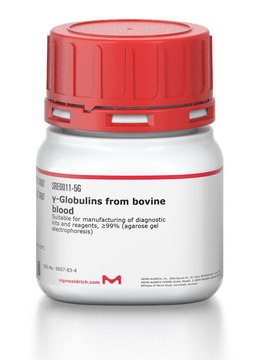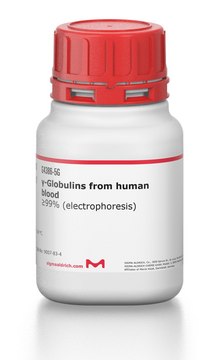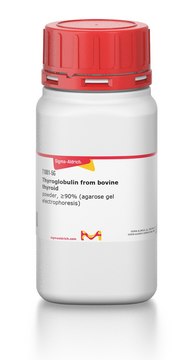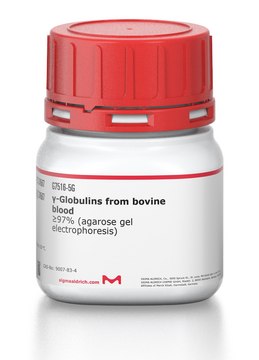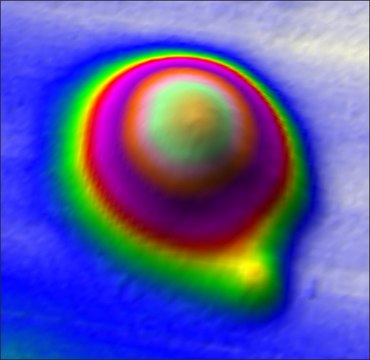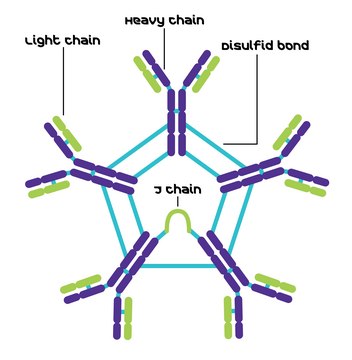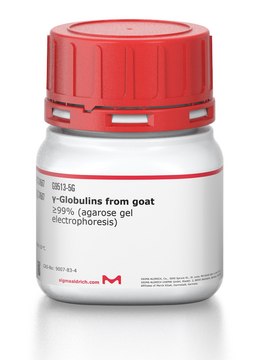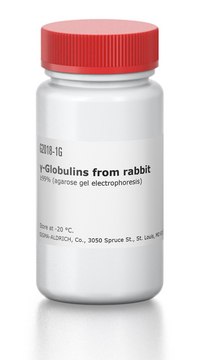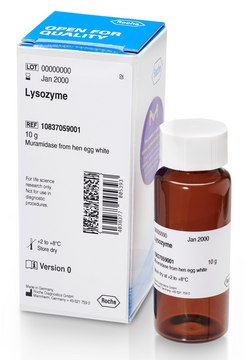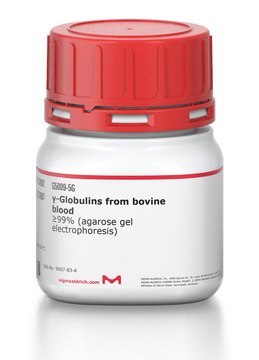G5009
γ-Globulins from bovine blood
≥99% (agarose gel electrophoresis)
Synonym(s):
Bovine γ-Globulin
About This Item
Recommended Products
biological source
bovine blood
Quality Level
Assay
≥99% (agarose gel electrophoresis)
form
powder
composition
NaCl, ≤4%
technique(s)
enzyme immunoassay: suitable
solubility
0.9% NaCl: soluble 25 mg/mL
storage temp.
−20°C
Looking for similar products? Visit Product Comparison Guide
1 of 4
This Item | G7516 | SRE0011 | G4386 |
|---|---|---|---|
| biological source bovine blood | biological source bovine blood | biological source - | biological source human blood |
| assay ≥99% (agarose gel electrophoresis) | assay ≥97% (agarose gel electrophoresis) | assay ≥99% (agarose gel electrophoresis) | assay ≥99% (electrophoresis) |
| form powder | form powder | form powder | form powder |
| storage temp. −20°C | storage temp. −20°C | storage temp. −20°C | storage temp. 2-8°C |
| solubility 0.9% NaCl: soluble 25 mg/mL | solubility 0.9% NaCl: soluble 50 mg/mL | solubility - | solubility 0.9% NaCl: soluble 50 mg/mL |
General description
Application
Biochem/physiol Actions
Preparation Note
Storage Class Code
11 - Combustible Solids
WGK
WGK 3
Flash Point(F)
Not applicable
Flash Point(C)
Not applicable
Personal Protective Equipment
Regulatory Information
Choose from one of the most recent versions:
Certificates of Analysis (COA)
Don't see the Right Version?
If you require a particular version, you can look up a specific certificate by the Lot or Batch number.
Already Own This Product?
Find documentation for the products that you have recently purchased in the Document Library.
Which document(s) contains shelf-life or expiration date information for a given product?
If available for a given product, the recommended re-test date or the expiration date can be found on the Certificate of Analysis.
How do I get lot-specific information or a Certificate of Analysis?
The lot specific COA document can be found by entering the lot number above under the "Documents" section.
What is the molecular weight of Product G5009, γ-Globulins from bovine blood?
The molecular weight of 150,000 is based on 2 heavy chains (55,000 each) and 2 light chains (20,000 each).
What is the class of immunoglobulins in Product G5009, γ-Globulins from bovine blood?
The gamma-globulin is a mixture of IgG (80%), IgM (10%), and IgA (<10%).
How do I find price and availability?
There are several ways to find pricing and availability for our products. Once you log onto our website, you will find the price and availability displayed on the product detail page. You can contact any of our Customer Sales and Service offices to receive a quote. USA customers: 1-800-325-3010 or view local office numbers.
What is the Department of Transportation shipping information for this product?
Transportation information can be found in Section 14 of the product's (M)SDS.To access the shipping information for this material, use the link on the product detail page for the product.
My question is not addressed here, how can I contact Technical Service for assistance?
Ask a Scientist here.
Our team of scientists has experience in all areas of research including Life Science, Material Science, Chemical Synthesis, Chromatography, Analytical and many others.
Contact Technical Service